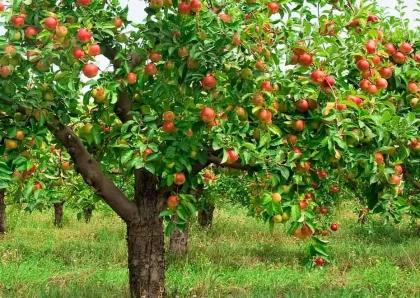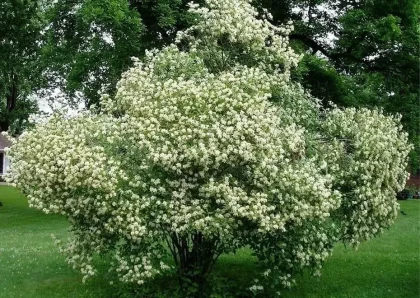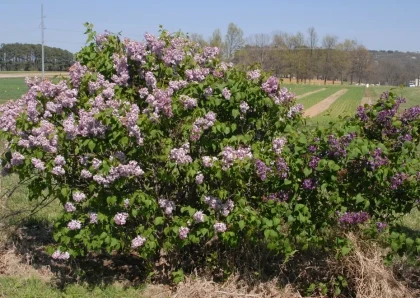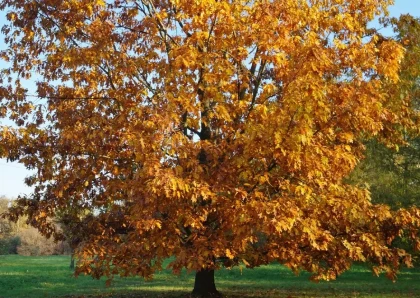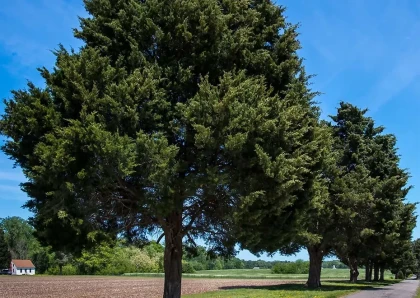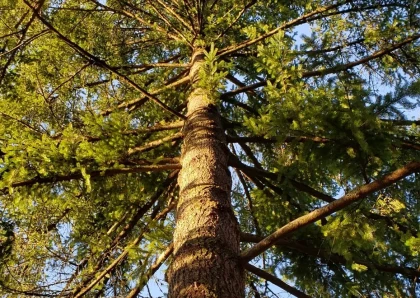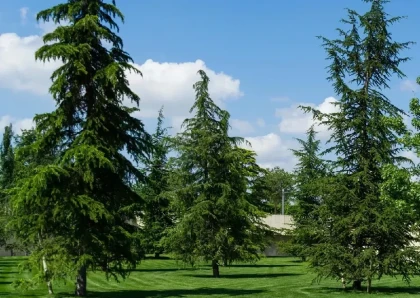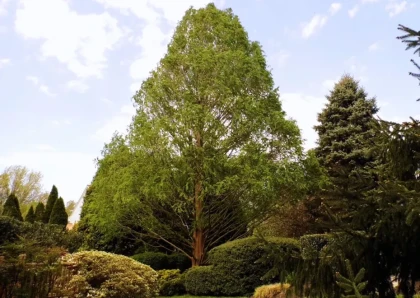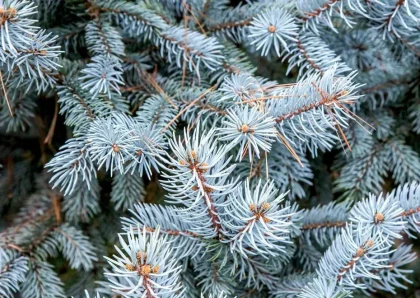
Pocomoke Crape Myrtle Shrub
Overview
Pocomoke Crape Myrtle Shrub is a small, deciduous shrub that is native to the southeastern United States. It is a member of the Lythraceae family, which also includes crape myrtle trees and hibiscus. Pocomoke Crape Myrtle Shrubs are known for their showy, deep rose-pink flowers that bloom in summer. The flowers are produced in clusters on the ends of the branches, and they can be quite large. Pocomoke Crape Myrtle Shrubs can grow to be 3-5 feet tall and wide, and they are hardy in USDA zones 6-9.
Pocomoke Crape Myrtle Shrubs are relatively low-maintenance. They are tolerant of a variety of soil conditions, as long as the soil is well-drained. They do not require a lot of water, but they should be watered regularly during the first year after planting. Pocomoke Crape Myrtle Shrubs are also resistant to pests and diseases.
Pocomoke Crape Myrtle Shrubs are a popular choice for landscaping. They are often used as specimen shrubs, in hedgerows, or as container plants. They can also be used as bonsai trees. Pocomoke Crape Myrtle Shrubs are a beautiful addition to any landscape, and they are relatively easy to care for.
According to the USDA Forest Service, Pocomoke Crape Myrtle Shrubs grow at a rate of 12-18 inches per year. This means that a shrub that is planted in the spring will be about 3 feet tall by the end of the year, and about 6 feet tall by the end of the second year. American Forests Association estimates that about 10 million Pocomoke Crape Myrtle Shrubs are planted each year in the United States.
What are the different types of Pocomoke Crape Myrtle Shrub?
There is only one type of Pocomoke Crape Myrtle Shrub. However, there are many different cultivars of Pocomoke Crape Myrtle Shrub, each with its own unique characteristics. Some popular cultivars include:
- Pocomoke Crape Myrtle Shrub 'Pink Perfection' : This cultivar has deep pink flowers.
- Pocomoke Crape Myrtle Shrub 'White Lightning' : This cultivar has white flowers.
- Pocomoke Crape Myrtle Shrub 'Dwarf Pocomoke' : This cultivar is a dwarf variety that grows to be only 2-3 feet tall.
- Pocomoke Crape Myrtle Shrub 'Lavender Twist' : This cultivar has lavender-colored flowers.
Different types of wood products can be made from Pocomoke Crape Myrtle Shrub?
Pocomoke Crape Myrtle Shrub wood is not typically used to make wood products. However, it is a hardwood that is strong and durable. It could potentially be used to make furniture, flooring, or other items.
Benefits of Eastern Pocomoke Crape Myrtle Shrub
- Pocomoke Crape Myrtle Shrubs are relatively low-maintenance.
- They are tolerant of a variety of soil conditions.
- They are resistant to pests and diseases.
- Pocomoke Crape Myrtle Shrubs are beautiful and add a splash of color to the landscape in summer.
- They can be used as a specimen shrub, in a hedgerow, or as a container plant.
Cons of using Pocomoke Crape Myrtle Shrub
- Pocomoke Crape Myrtle Shrubs can be susceptible to leaf scorch in hot, dry climates.
- They may not flower well in shady areas.
- The wood is not as rot-resistant as some other types of wood.
Tips for planting and maintaining Eastern Redbud
- Pocomoke Crape Myrtle Shrubs should be planted in full sun to partial shade.
- They prefer well-drained soil, but they can tolerate a wide range of soil conditions.
- Pocomoke Crape Myrtle Shrubs do not require a lot of water, but they should be watered regularly during the first year after planting.
- Fertilize Pocomoke Crape Myrtle Shrubs in the spring with a balanced fertilizer.
- Prune Pocomoke Crape Myrtle Shrubs in the late winter or early spring to remove dead, damaged, or diseased branches.
Conclusion
Pocomoke Crape Myrtle Shrub is a beautiful and versatile shrub that is well-suited for a variety of landscapes. It is relatively low-maintenance and can tolerate a variety of soil conditions. Pocomoke Crape Myrtle Shrubs are a great choice for adding a splash of color to your yard in summer.
FAQs
- How long does it take for a Pocomoke Crape Myrtle Shrub to reach maturity?
- What are some common pests and diseases that can affect Pocomoke Crape Myrtle Shrubs?
- How can I protect my Pocomoke Crape Myrtle Shrub from pests and diseases?
Pocomoke Crape Myrtle Shrubs typically reach maturity in 5-7 years.
Some common pests that can affect Pocomoke Crape Myrtle Shrubs include aphids, scale insects, and leaf miners. Some common diseases that can affect Pocomoke Crape Myrtle Shrubs include powdery mildew, leaf spot, and rust.
You can protect your Pocomoke Crape Myrtle Shrub from pests and diseases by inspecting it regularly for signs of infestation or infection. You can also remove affected leaves or branches and treat the shrub with an appropriate pesticide or fungicide.
No listings available
Related Products
Golden Jubilee Peach Tree
Prunus persica 'Golden Jubilee' is a specific cultivar of peach tree. It is a deciduous fruit tree belonging to the Rosaceae family. 'Golden Jubilee'...
Gray Dogwood
Cornus racemosa, commonly known as the gray dogwood or northern swamp dogwood, is a deciduous shrub native to eastern North America. It belongs to...
Common Fragrant Lilac
Syringa vulgaris, commonly known as the Common Lilac or French Lilac, is a deciduous shrub belonging to the genus Syringa in the olive family...
European Beech Tree
The European Beech (Fagus sylvatica) is a deciduous tree species native to much of Europe, including parts of western Asia. It is one of...
Emerald Arborvitae Tree
The Emerald Arborvitae (Thuja occidentalis 'Smaragd') is a popular evergreen tree or shrub in landscaping and gardening. It belongs to the cypress family (Cupressaceae)...
Eastern Red Cedar Tree
The Eastern Red Cedar, scientifically known as Juniperus virginiana, is a species of evergreen tree native to eastern North America. It belongs to the...
Douglas Fir Tree
The Douglas Fir (Pseudotsuga menziesii) is an evergreen coniferous tree that belongs to the Pinaceae family. It is one of the most common and...
Deodar Cedar Tree
The name "Deodar" is derived from the Sanskrit words "deva" (meaning "god") and "daru" (meaning "wood" or "tree"), hence it is often referred to...
Dawn Redwood Tree
The Dawn Redwood tree, scientifically known as Metasequoia glyptostroboides, is a deciduous coniferous tree that belongs to the family Cupressaceae. It is a unique...
Colorado Blue Spruce Tree
The Colorado Blue Spruce, scientifically known as Picea pungens, is a species of coniferous tree belonging to the Pinaceae family. It is native to...
Questions & Answers
What do you want to know about this product?
Reviews (5)
UrbanArborist87
Compact Beauty for Small Space
Pocomoke Crape Myrtle Shrub's vibrant flowers and compact size make it a perfect choice for urban gardens. Adds a pop of color!
BloomingBotanist
A Garden Gem
Pocomoke Crape Myrtle Shrub is a showstopper in my garden. Its stunning blooms and attractive bark make it a standout choice.
PollinatorProtector
Petite Beauty with Big Impact
Pocomoke Crape Myrtle Shrub may be small, but its flowers create a big impact. It brings a burst of color and attracts pollinators.
PollinatorProtectors
Big Impact
Pocomoke Crape Myrtle Shrub may be small, but its flowers create a big impact. It brings a burst of color and attracts pollinators.
EffortlessGardener
Charming and Low Maintenance
Pocomoke Crape Myrtle Shrub's compact size and minimal care needs make it a delightful addition to any garden. Highly recommended!





